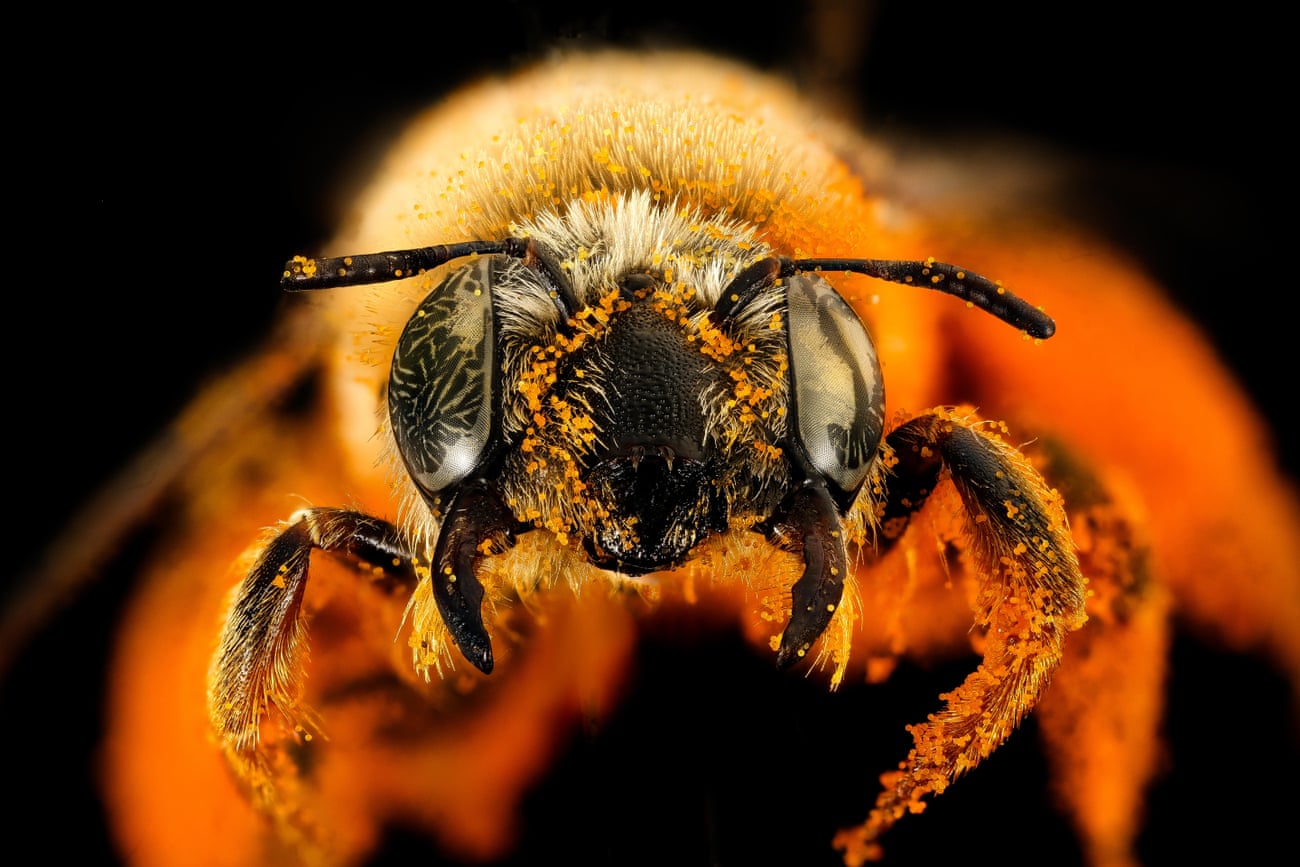When Stephen Buchmann finds a wayward bee on a window inside his Tucson, Arizona, home, he goes to great lengths to capture and release it unharmed. Using a container, he carefully traps the bee against the glass before walking to his garden and placing it on a flower to recuperate.
Buchmann’s kindness – he is a pollination ecologist who has studied bees for over 40 years – is about more than just returning the insect to its desert ecosystem. It’s also because Buchmann believes that bees have complex feelings, and he’s gathered the science to prove it.
This March, Buchmann released a book that unpacks just how varied and powerful a bee’s mind really is. The book, What a Bee Knows: Exploring the Thoughts, Memories and Personalities of Bees, draws from his own research and dozens of other studies to paint a remarkable picture of bee behavior and psychology. It argues that bees can demonstrate sophisticated emotions resembling optimism, frustration, playfulness and fear, traits more commonly associated with mammals. Experiments have shown bees can experience PTSD-like symptoms, recognize different human faces, process long-term memories while sleeping, and maybe even dream.
Read the rest of this article at: The Guardian
When they came up with machine-sliced bread, did we start referring to other bread as “annoying”? After the invention of the dishwasher, did we start calling our sinks “stupid”? Post-railroad, did we slander boats as “useless and embarrassing”?
Obviously not. Yet after the smartphone came along, a category of product that was once known simply as “phones” became, rudely, “dumb phones.” If a phone didn’t have an app store and a powerful operating system and an internet connection, it was no longer considered particularly admirable that it performed the core function of telephoning. It was dumb. If you held one, you’d be like, “This doesn’t do anything,” despite the fact that it did at least one thing perfectly well.
Well, everybody hates their smartphone now. These phones are too smart. They distract us and delude us and ruin our lives. Now “younger generations” are supposedly crawling back to the dumb phone, starting a “movement,” as a recent CNBC report claimed. This aired two months after a Good Morning America segment about a flip-phone “comeback,” which followed a very similar Today discussion and a New York Times story about self-described “Luddite” teens in Brooklyn, who spend a lot of time in the park with one another and their (dumb) flip phones.
This craving for dumb phones past represents a perfect mix of anti-technology wellness trends and now-trendy aughts nostalgia. “I miss when phone designs were funky,” people say on TikTok, where they also speak of digital detoxes and “dopamine diets.” Tumblr moodboards of beautiful, outdated phones are tagged #y2kcore, #nostalgic, #nostalgiacore. Dumb-phone influencers explain the joy of dumb phones to thousands of subscribers on YouTube; one of them sells T-shirts and tank tops that say My phone is not dumb, it’s clever.
Read the rest of this article at: The Atlantic
How Cookie Jars Capture American Kitsch
:format(webp)/cdn.vox-cdn.com/uploads/chorus_image/image/72110078/23.3_CookieJars.0.png)
Recipes, money, written affirmations, and receipts. That’s what Hazy Mae keeps in her ceramic cookie jars. Cookies? None. Since she was gifted her first cookie jar, a midcentury ceramic bear, several years ago, the New York City-based artist has become a collector of a few dozen quirky, mostly vintage cookie jars. “A friend of mine was like, ‘You’re the only person I know with 100 cookie jars and not a single cookie in your house,’” says Mae, whose mother kept similar odds and ends — never cookies — in her collection of house-shaped cookie jars.
But Mae isn’t just a collector, she’s also a cookie jar maker, and her work is part of a new wave of appreciation for ceramic cookie jars. Boosted by ongoing enthusiasm for pottery and sculpture, new cookie jar creations are once again dotting retail shelves, as a revived reverence for vintage models also takes hold.
Ceramic cookie jars — those flamboyant crockeries topped with ornate finials — first brought art into the heart of American homes decades ago. Becoming a prominent kitchenware item by the 1950s, around the introduction of premade cookie dough, cookie jars remained popular well into the 1990s. But even after being sidelined as seasonal holiday decor, broad adoration for ceramic cookie jars has never fully disappeared. “The idea of a cookie jar is familiar and it feels nostalgic,” says Mae. “But also, it’s new and fresh and contemporary.”
Read the rest of this article at: Eater
When Miriam, a 45-year-old health worker from Buenos Aires, first heard about Generación Zoe, it seemed like a stroke of serendipity. She had just collected a severance payment from a previous job, when a friend suggested she invest in what was sold to her as a sure bet.
Founded by Leonardo Cositorto, a popular media personality with a rags-to-riches tale, Generación Zoe pitched itself as an “educational and resource-creating community for personal, professional, financial and spiritual development.” Generación Zoe claimed to make money through trading, and promised a 7.5% monthly return on investment for three years for those who put money into its “trust.” In Argentina and other countries, other companies with the Zoe name peddled a similar narrative.
Mirian, who asked to be identified only by her first name out of fear of retaliation from people involved in Generación Zoe, was convinced. She felt like fate and “energies” had brought Zoe into her life at just the right time. So, in August 2021, she visited one of Zoe’s brick-and-mortar branches in the wealthy Núñez neighborhood in the northern part of the city, and handed over $1,000.
It was clear to her that she’d made the right decision. Over the next weeks and months, Mirian watched her savings grow exponentially on Zoe’s online dashboard. Two months after joining, she put more money in, persuaded by Zoe’s latest product: “robots” that could allegedly predict market fluctuations and double your initial investment in just three months.
Read the rest of this article at: Rest Of World
At a location he keeps secret, John Honovich was on his laptop, methodically scouring every link on a website for a conference half a world away. Hikvision, the world’s largest security camera manufacturer, was hosting the event—the 2018 AI Cloud World Summit—in its hometown of Hangzhou, a city of about 10 million people not far from Shanghai. Honovich, the founder of a small trade publication that covered video surveillance technology, wanted to find out what the latest Hikvision gear could do.
He zeroed in on one section of the conference agenda titled “Eco-Friendly, Peaceful, Relaxed” and found a description of an AI-powered system installed around Mount Tai, a historically sacred mountain in Shandong. A video showed Hikvision cameras pointed at tourists climbing the thousands of stone steps leading to the famous peak. Piano music played as a narrator explained, in Mandarin with English subtitles, that the cameras were there “to identify all visitors to ensure the safety of all.” The video cut to a shot of a computer screen, and Honovich hit pause. He saw a zoomed-in view of one visitor’s face. Below it was data that the camera’s AI had inferred. Honovich downloaded the video and took screenshots of the computer screen, for safekeeping.
Read the rest of this article at: Wired








